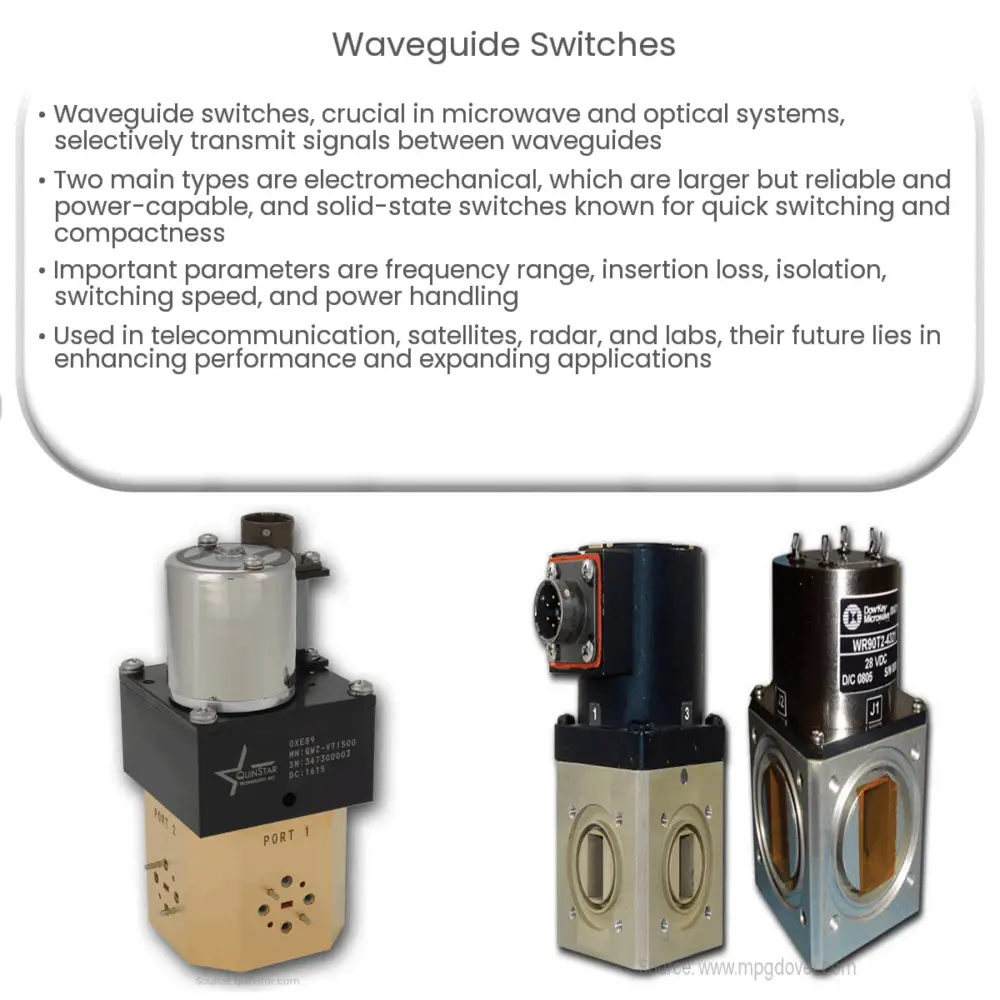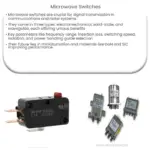Explore the functioning, types, key parameters, applications, and future prospects of waveguide switches in telecommunications and beyond.

Understanding Waveguide Switches
Waveguide switches are fundamental components in various microwave and optical systems. These switches allow for the selective transmission or redirection of signals from one waveguide to another. The operation of these switches relies on mechanical or electronic methods, and they have broad applications in telecommunications, satellite communications, radar systems, and experimental physics.
Types of Waveguide Switches
- Electromechanical Waveguide Switches: These switches use mechanical components to physically alter the path of the signal within the waveguide. They are typically large, reliable, and capable of handling high power levels. However, their switching speeds can be relatively slow.
- Solid State Waveguide Switches: Solid state waveguide switches, unlike their electromechanical counterparts, use semiconductor technologies to switch signals. They are known for their fast switching speeds and compact size, although they might not handle high power levels as effectively as electromechanical switches.
Waveguide Switch Operation
The principle behind waveguide switches lies in electromagnetism. In a waveguide, electromagnetic waves are confined within a certain physical structure. The waveguide switch redirects these waves from one pathway to another, controlling the path of signal transmission. The switching mechanism either physically changes the structure of the waveguide (in electromechanical switches), or modifies the properties of the semiconductor material to influence the wave path (in solid state switches).
Key Parameters of Waveguide Switches
When evaluating waveguide switches, several key parameters are to be considered, which include:
- Frequency Range: This parameter signifies the range of frequencies over which the switch can effectively operate.
- Insertion Loss: Insertion loss refers to the reduction in power density (signal strength) as it passes through the switch.
- Isolation: This measures how well a closed port (a port that is not in use) is isolated from the signal path to prevent leakage.
- Switching Speed: Switching speed is the time it takes for the switch to change from one state to another.
- Power Handling: It indicates the maximum power level that a switch can handle without damage or significant performance degradation.
Applications of Waveguide Switches
Due to their unique capabilities, waveguide switches have a plethora of applications. Let’s delve into a few:
- Telecommunication Networks: Waveguide switches are crucial in telecommunication networks where they are used to manage signals, direct communication traffic, and enhance network efficiency.
- Spacecraft and Satellite Communication Systems: In these systems, waveguide switches help in handling microwave signals for telemetry, tracking, and command operations.
- Radar Systems: Radar systems utilize waveguide switches to switch between transmitting and receiving modes.
- Experimental Physics and Laboratories: Waveguide switches also find their use in scientific experiments and laboratories for the manipulation and control of microwave and optical signals.
Future of Waveguide Switches
The future of waveguide switches looks promising, with ongoing research and development efforts aimed at improving their performance and expanding their applications. Particularly in the field of optical waveguides, there is a rising interest due to the ever-increasing demand for high-speed data transmission. As such, we can anticipate novel waveguide switch designs and technologies, improved switching speeds, and more compact and power-efficient models in the foreseeable future.
Conclusion
In conclusion, waveguide switches are essential components in the modern world of telecommunications and beyond. They facilitate efficient and controlled transmission of signals, making them indispensable in a variety of sectors. Understanding their operation, key parameters, types, and applications provides valuable insight into their significant role. As technology continues to advance, so will the capabilities of waveguide switches, broadening their application spectrum and elevating their performance to meet the demands of future communication systems.




